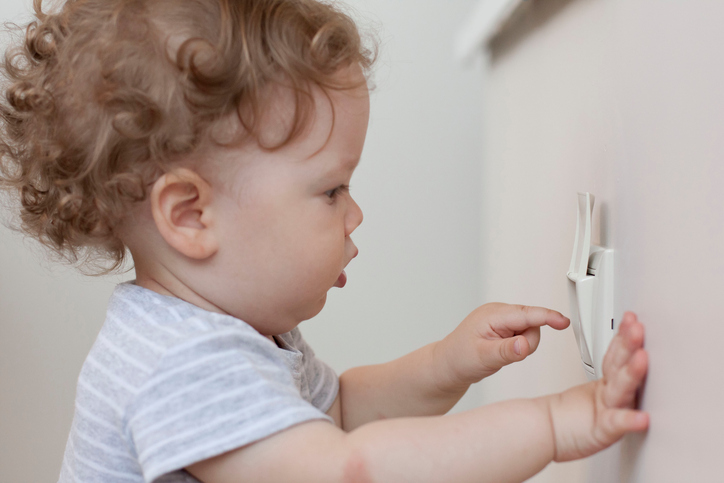Baby-Proofing Checklist
by Chante Perryman
Bringing home a new baby is an exciting memory you will always cherish. But what happens once baby gets a little bigger and more mobile? Is the nursery baby proofed to keep them safe or does it need some attention? Here are a few quick tips to help you keep your little one unharmed.
Crib Safety: Your baby will eventually spend quite a bit of time sleeping in their crib. You want to make sure the crib has fixed rails and that the space in between the slats is 2 3/8 inches or less.
If you are using an older bed, drop rails are now banned. To correct this, you can get an immobilzer for it.
Soft items like pillows, blankets, stuffed toys and bumpers should never be in the crib or any place where baby is sleeping. These items can cause them to suffocate.
Once baby is able to be up on their hands and knees, remove all mobiles and hanging toys. Also, as baby pulls up, move the mattress down.
Changing Tables: Babies are squirmy and need lots of hands on attention because they learn to roll quickly. When using the changing table, remember to keep one hand on baby at all times to prevent a falling hazard.
Make sure your changing table has safety straps and a buckle for you to use during changes. Before you change baby, make sure you have all items like diapers, wipes, creams, and a small toy readily available.
Don’t ever leave a baby on the changing table alone.
Furniture: Secure all heavy furniture and televisions with furniture straps, including dressers and bookshelves.
Do not put a television on top of a dresser – the drawers can be used for climbing up. Use furniture corners and edge bumpers on all sharp edges.
Windows: Furniture and cribs should be kept away from windows. Do not rely on window screens to keep your baby safe. Screens are used to keep bugs and insects out and not children in. Childproof screens and window guards can be installed and have been proven to prevent falls.
Keep all blind cords tied and out of reach or cut the ends and attach breakaway safety tassles. Again, don’t put the crib or furniture by windows because the blind or dangling drape cords can cause strangulation.
Electrical Outlets: Outlets are normally close to the floor so to keep your little one from experiencing electrical shock, place outlet covers on all exposed electrical sockets.
Some small covers can be a choking hazard if your little one is able to get them out of the wall. For protection, get the ones that require two hands to remove, sliding covers, or the cover plates that screw on. And you can always place furniture in front of outlets for more protection.
Toys: Toys should be appropriate for baby’s age and physical skill. If a toy can fit down a toilet paper roll, it is too small and can potentially be a choking hazard.
Toys should be securely put together and in good condition. No buttons, ribbons or other pieces that could come off and be a choking or strangulation hazard.
Choose a toy box that is safe as well. Avoid toy boxes with hinged lids that could slam down. If it does have hinges, make sure it has a lid support that can prop the lid open. A toy box with a removable lid is always good. Also, one with ventilation holes or space beneath the lid is better.
Additional Tips: If there are any cords, use cord holders to keep long cords against the wall. If using a baby monitor, keep the cords tightly wound and always away from the crib or choose a cordless monitor.
Install a smoke alarm outside of every bedroom and check the batteries every month.
The best way to see anything that needs to be baby proofed is to get on the floor – on baby’s level. Get down on your hands and knees and crawl around. What is in reach on their level? You will be amazed with what you find close to the ground!
Chanté Perryman is the owner of Baby Dreams Maternity Concierge. To schedule a Baby/Child Proofing Consultation, contact her at Baby.DreamsMC@gmail.com or by visiting www.BabyDreamsMC.com.

